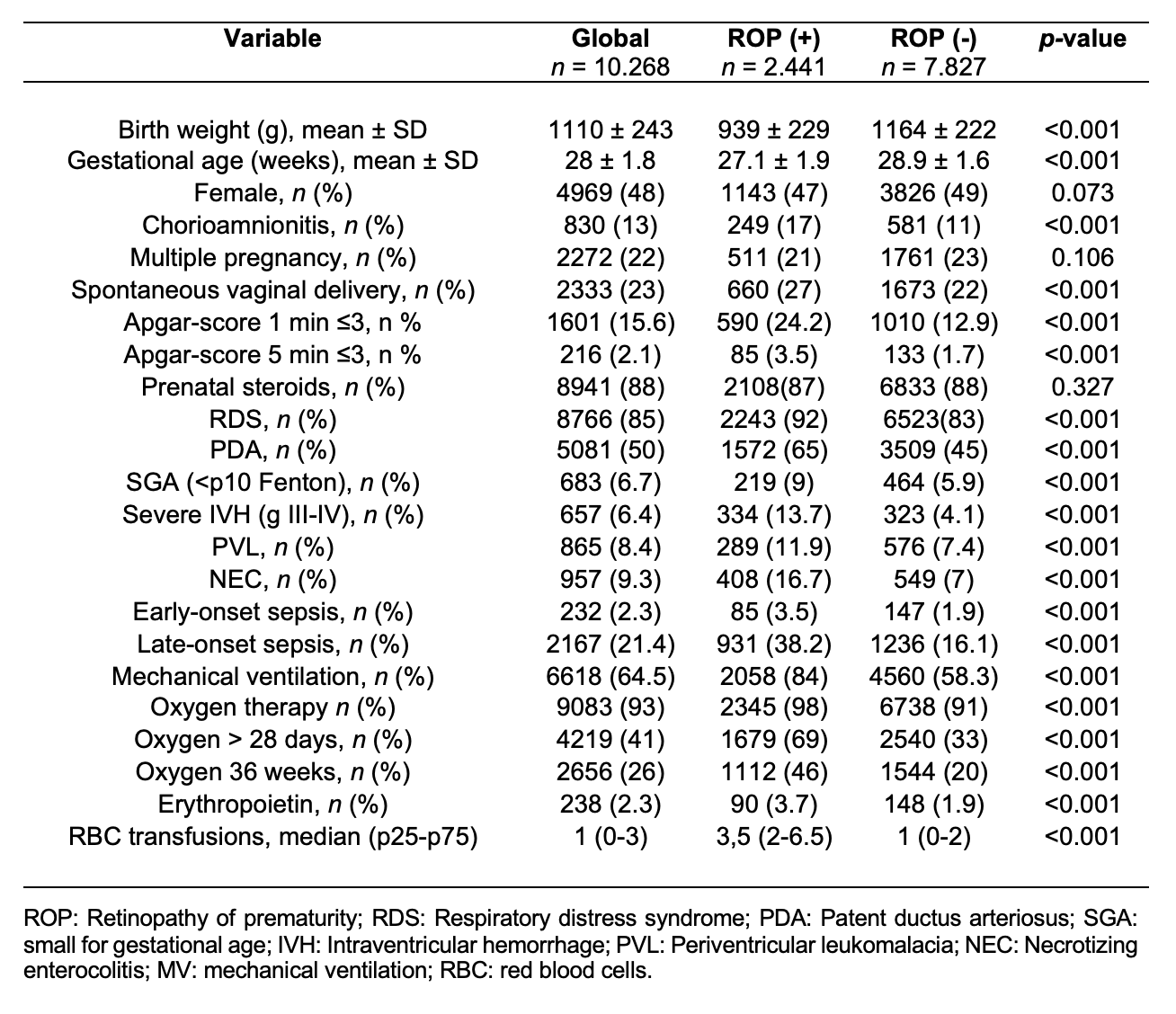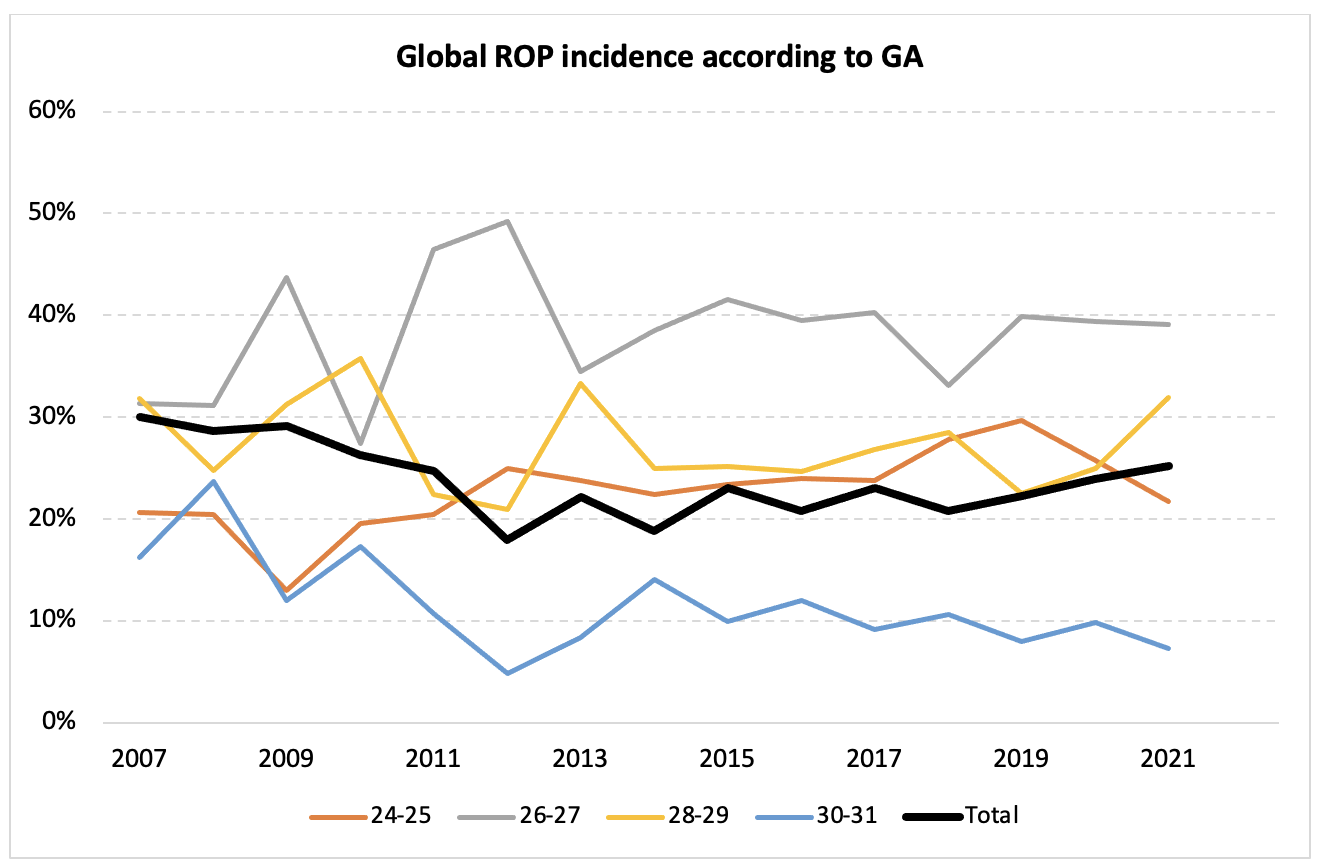Neonatology
Session: Neonatal General 8: ROP, Neurology
304 - Retinopathy of prematurity: Incidence throughout a 15-year period in the NEOCOSUR Neonatal Network
Monday, May 6, 2024
9:30 AM - 11:30 AM ET
Poster Number: 304
Publication Number: 304.2861
Publication Number: 304.2861

Alberto Toso, MD (he/him/his)
Neonatologist
Pontificia Universidad Católica de Chile
Pontificia Universidad Catolica de Chile
Santiago, Region Metropolitana, Chile
Presenting Author(s)
Background: Retinopathy of prematurity (ROP) is a major morbidity and long-term sequelae among surviving very low birthweight (VLBW) premature infants and one of the leading preventable causes of childhood blindness. Thus, it is relevant to monitor ROP incidence throughout time.
Objective: To determine ROP overall incidence, and stratified by gestational age, throughout a 15-year period in the neonatal South American NEOCOSUR Network.
Design/Methods: We analyzed standardized data submitted to NEOCOSUR´s database unit by the participating centers. Retrospective cohort study, employing prospectively collected data, including surviving at discharge VLBW infants between 24 to 31 weeks GA and 400 to 1500 grams born at 26 centers from the NEOCOSUR Neonatal Network during the study period between 2007-2021. Categorical values were compared using the Chi-Square test and numerical values were compared using Student’s t-test.
Results: Comparing baseline characteristics of VLBW infants with and without ROP, there are expected differences in birth weight, gestational age, and several main morbidities and respiratory therapies (Table 1).
There was a decrease in ROP incidence between 2007 and 2014; thereafter from 2014 to 2021, it increased. According to GA, more immature infants behave differently than more mature infants (Figure 1). Although these changes are non-statistically significant, we think they are clinically relevant.
Conclusion(s): Overall, ROP incidence has not changed significantly throughout a 15-year period but has fluctuations that deserve further analysis. Continuous efforts should be made to reduce ROP incidence in the network.


